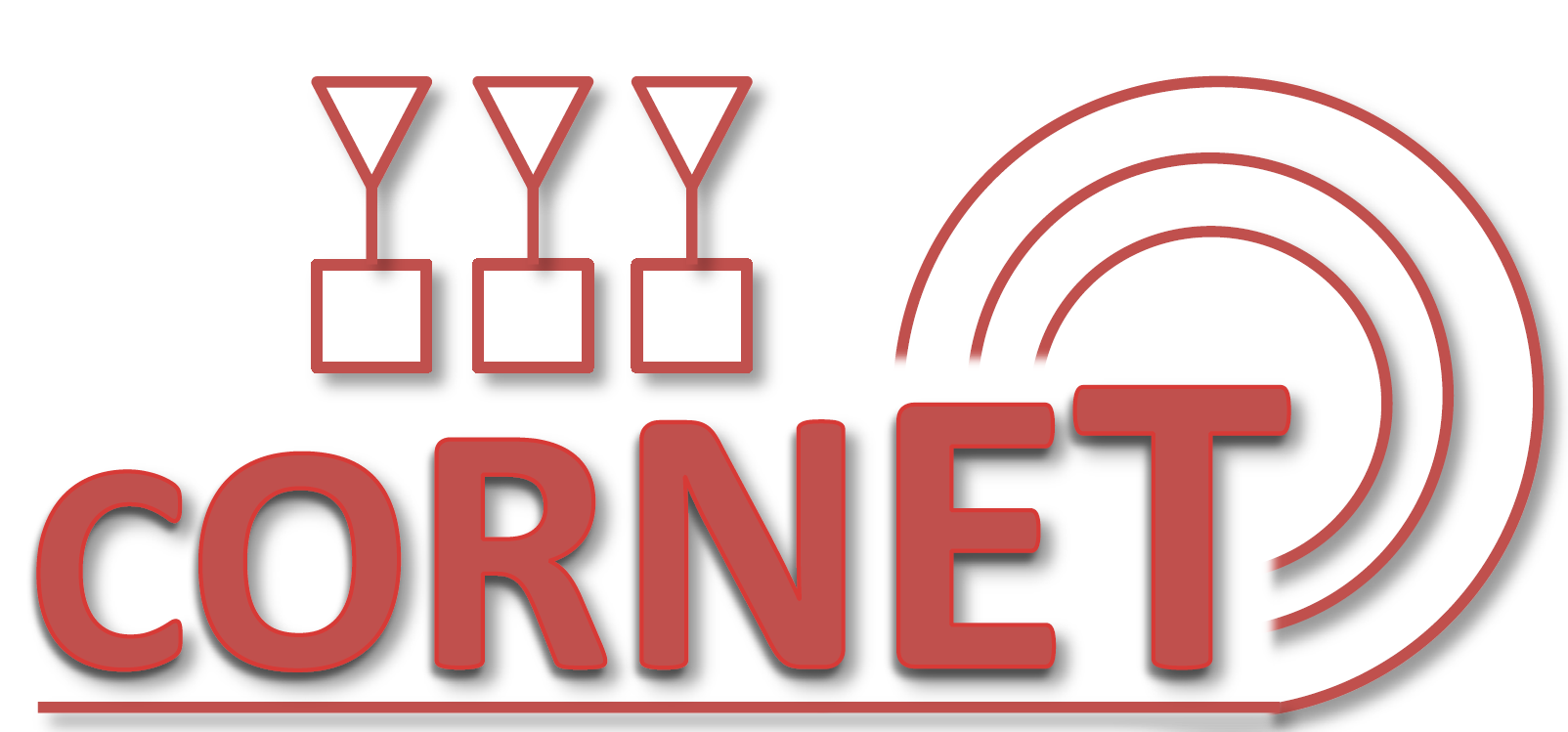| Version 4 (modified by drdepoy, 14 years ago) |
|---|
Current Testbed Operational Status
NOTE: The preliminary testbed has not been completely SHUTDOWN. A limited portion of the regular testbed is now open.
All CORNET nodes currently have private IP addresses, and are behind the CORNET firewall. However, the ssh port for each individual node is still directly accessible through the firewall. To access the CORNET nodes you must ssh to the CORNET gateway, 128.173.221.40, using a specific port that is unique to each CORNET node. The CORNET gateway redirects the ssh traffic to the appropriate CORNET node ssh server.
For information on the physical locations of the RF portion of the node, see here: CORNET Node Location and Status Information
The port list is as follows, where NodeX-Y refers to node Y on floor X:
- Node1-1: 7001
- Node1-2: 7002
- Node1-3: 7003
- Node1-4: 7004
- Node1-5: 7005
- Node1-6: 7006
- Node1-7: 7007
- Node1-8: 7008
- Node1-9: 7009
- Node1-10: 7010
- Node1-11: 7011
- Node1-12: 7012
- Node2-1: 7013
- Node2-2: 7014
- Node2-3: 7015
- Node2-4: 7016
- Node2-5: 7017
- Node2-6: 7018
- Node2-7: 7019
- Node2-8: 7020
- Node2-9: 7021
- Node2-10: 7022
- Node2-11: 7023
- Node2-12: 7024
- Node3-1: 7025
- Node3-2: 7026
- Node3-3: 7027
- Node3-4: 7028
- Node3-5: 7029
- Node3-6: 7030
- Node3-7: 7031
- Node3-8: 7032
- Node3-9: 7033
- Node3-10: 7034
- Node3-11: 7035
- Node3-12: 7036
- Node4-1: 7037
- Node4-2: 7038
- Node4-3: 7039
- Node4-4: 7040
- Node4-5: 7041
- Node4-6: 7042
- Node4-7: 7043
- Node4-8: 7044
- Node4-9: 7045
- Node4-10: 7046
- Node4-11: 7047
- Node4-12: 7048
For example, to access node1-3, ssh to the IP address 128.173.221.40 using port 7003.
Accessing the network from Windows
From a windows machine, an SSH client is required in order to remotely access the CORNET nodes individually. A popular windows SSH client is PuTTY.
Accessing the network from Linux
From a linux machine simply issue the following command where the port is 7000 + the node # you want to log into.
# ssh -X <username>@128.173.221.40 -p <7000 + node#>
Note: the -X allows X11 forwarding for running X11 applications remotely.
For example, to login to CORNET node1-2 with the login name "testuser" do the following:
# ssh -X testuser@128.173.221.40 -p 7002
To login to CORNET node1-3 with the login name "testuser" do the following:
# ssh testuser@128.173.221.40 -p 7003
Obtaining Remote Access Login Information
To obtain login credentials for the CORNET nodes, please email the CORNET administration at [vtcornet@…]
Working from your User directory
Each registered user receives a folder on a dedicated NFS drive which allows them to store and access code locally. Each CORNET node mounts the NFS directories at boot time and you may access your directory on each node at /users/*my_login*.
In the interest of open and collaborative development, each user has read access to the other user folders and read/write access to their own folder. You may upload files into your NFS directory in the following way:
- Verify you can login to the node by following the above ssh procedures. - Change to your user directory:
# cd /users/*my_login*
- Open a new local shell (ctrl+shift+t in Ubuntu) - Change to the directory which contains the files to copy:
# cd /path/to/myfiles
- Use the SCP command to copy the local directory "mydir" to the remote node:
# scp -r -P [Port] mydir *my_login*@cornet.wireless.vt.edu:/users/*my_login*
Note: the -P MUST be capitalized. -r means recursive copy, and is used for copying directories. You do not need to use -r to copy single files.
Once you have copied the files to your user directory, verify the copy was successful by issuing the "ls" command in the first shell you opened. You may now directly work with the files in your user directory.
Using OSSIE with CORNET
In order to place custom OSSIE waveforms and components on the nodes, first follow the above procedures to copy the needed directories to your CORNET user directory. When finished, ssh into a node and browse to your user directory. In order for OSSIE and ALF to recognize your components, they must be installed to the node. To install a component or waveform, simply enter the component or waveform directory and issue the following commands:
# make # sudo make install
This will compile your code and place the binaries in the /sdr/dom/bin and /sdr/dom/waveforms directories. You can then start the waveforms using the c_wavloader command line tools or from the OEF/ALF environment. Provided you are logged in with X11 forwarding enabled, you can load the Eclipse and ALF GUI's on a remote node with the following command:
# cd ~/eclipse # sudo ./eclipse # ALF
Node Software
Each node contains the following software:
- Ubuntu Linux 9.04 Client Version
- GNU Radio 3.3.0
- OSSIE 0.8.1
